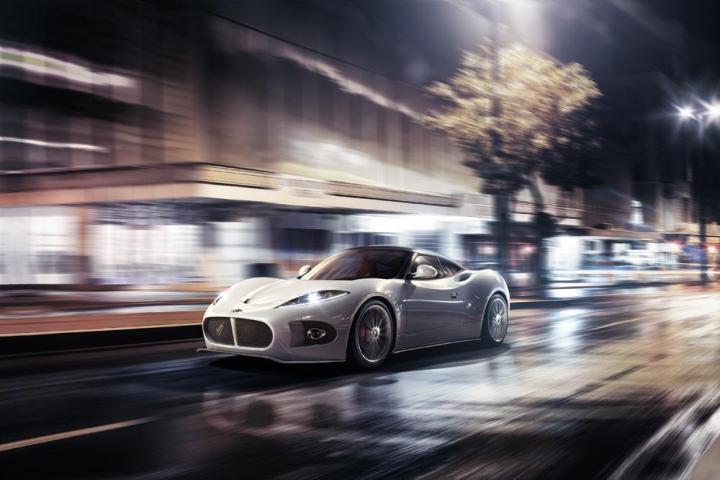
The Spyker B6 Venator is one of the stranger-looking new cars we’re expecting in the coming months, but its engine may not be as exotic as its styling.
Reports indicate that the B6 will use a Lotus-sourced engine. That means its engine will actually be made by Toyota.
Lotus has been using Toyota engines in its cars for years now. They’re reliable and guaranteed to be emissions-certifiable in all major markets.
The B6’s engine will be based on a Toyota design, but built from the block up by Lotus.
Auto Week Netherlands views the supercharged 3.5-liter V6 from the Exige S as the most likely candidate. Producing 345 horsepower and 295 pound-feet of torque, it can rocket the little Lotus to 62 mph in 3.8 seconds.
Lotus uses the same engine in the larger Evora S, along with a non-supercharged version. The British carmaker also puts naturally-aspirated and supercharged 1.6-liter four-cylinders in the Elise roadster.
The B6 Venator concept unveiled at the 2013 Geneva Motor Show had a mid-mounted V6, so it seems the larger engine is the one customers will get. However, Spyker has previously said the car would boast at least 375 hp, so there may be some tuning in the engine’s future.
The B6 is expected to weigh around 3,000 pounds; 719 more than the flyweight Exige S, but that’s not surprising given its less-hardcore mission.
Like the C8 and D8 Peking-to-Paris concept, the B6 Venator’s Steampunk styling will make it a fashion item as well as a car. That means many buyers may not care what is under the hood. Until the light turns green, that is.


